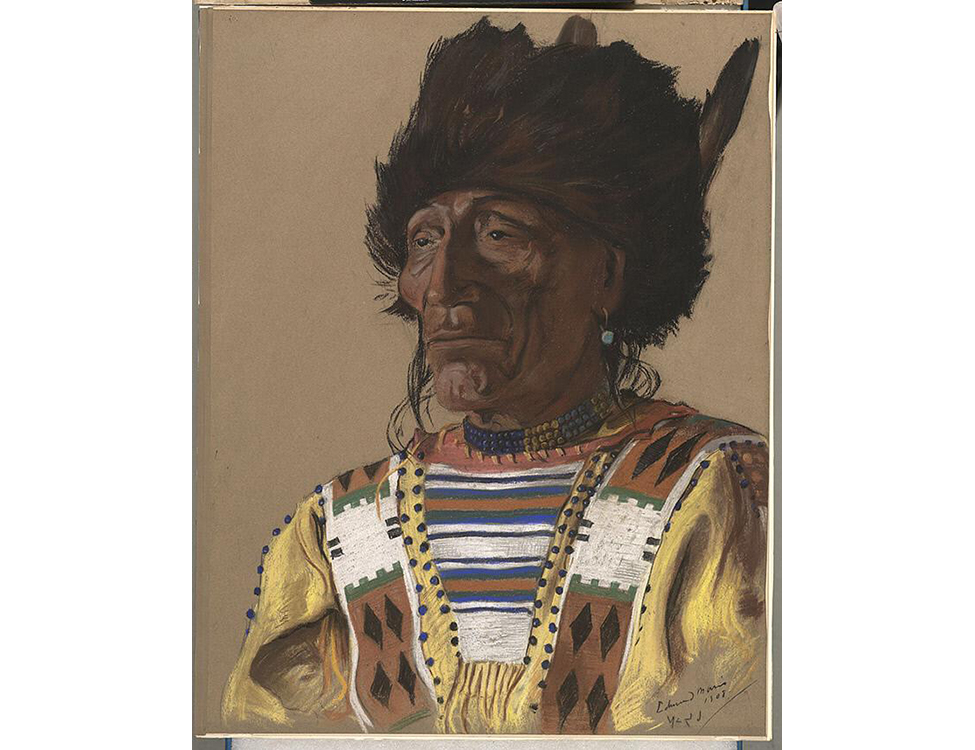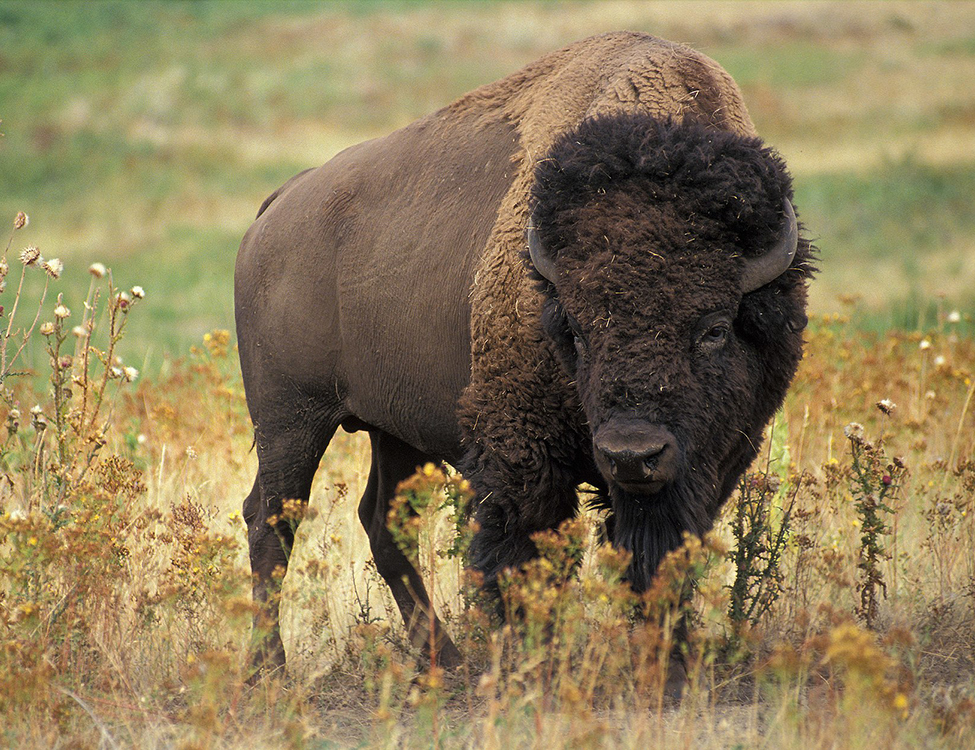History of First Nations and Saskatoon

First Nations peoples are the original Indigenous peoples of the territories now known as Canada. They largely occupied regions south of the Arctic. The Indigenous peoples of the Great Plains of North America lived on the land, moving with the seasons and the bison herds, gathering food and using the resources of the natural world in a balances and proportional manner.
Innumerable generations of Indigenous peoples have lived in the Saskatoon region for thousands of years. Archeological excavations at Wanuskewin Heritage Park just north of the city show the area was occupied at least 6,000 years ago. Over the millennia different cultural groups occupied the region. From the time of the treaties the Plains Cree have been the most common Indigenous people in the Saskatoon region, but other First Nations cultures are also present including the Saulteaux or Plains Ojibwe, Dakota and the Nakoda or Assiniboine. Other First Nations peoples in Saskatchewan include the Dene, Swampy Cree and Woodland Cree located in northern Saskatchewan, as well there is a Lakota First Nation in southern Saskatchewan.
Plains Cree
The Cree peoples began to move onto the Northern Plains from the woodlands in the 1700’s. The Plains Cree or nēhiyawak excelled as middlemen in the fur trade by trading between the English and the French, and other Indigenous peoples. The Plains Cree retained many of their traditional woodland beliefs and practices. The Plains Cree lived in smaller bands or hunting groups for much of the year. However, these groups would gather into larger groups in the summer for socializing, fur trading and ceremonies. Wanuskewin Heritage Park and the Buffalo Child Stone site near Elbow are example of such gathering sites.
Reference:
Dakota
Historically the peoples now know as the Dakota, Nakoda and Lakota Nations formed a formal cultural grouping called the Seven Council Fires or Oc̀eṫi S̀ak̄owiƞ. Their lands extended mainly across the Great Plains of both Canada and the United States but had originated in the eastern part of North America. The British Crown and the Dakota signed a treaty in 1787. Partly in fulfillment of this treaty the Dakota served as allies of the British Crown in the American Revolution and in the War of 1812. In 1862, following an uprising in Minnesota, many Dakota, came north to Canada. The Dakota Nations in Canada were provided their own reservations but are not at this time covered by the treaties.
References:
http://whitecapdakota.com/history-culture/
https://teaching.usask.ca/indigenoussk/import/dakota__lakota.php
Saulteaux
The Saulteaux speak a distinct language belonging to the Ojibwe family of languages. It has some similarities to other dialects of Ojibwe but generally it has a different dictionary and grammar. The name Saulteaux is said to come from the French word saulteurs, meaning People of the Rapids; this name refers to the location around the St. Mary’s River (Sault Ste. Marie), where French fur traders first encountered Ojibwe speaking peoples. Many Saulteaux assert that they came to the Northern Plains some centuries ago, long before contact with Europeans. After the Saulteaux people had established themselves on the Northern Plains often Ojibwe people would join them from the east. The Saulteaux term for themselves is Anihšināpē.
Reference:
Nakoda
The Nakoda or Assiniboine are a Siouan-speaking people related to the Stoney peoples of Alberta. Linguistically, the Nakoda language is distinct from other Sioux dialects and they consider themselves a distinct people. The name Assiniboine derives from the Ojibwe term for these people Asiniibwaan “stone Sioux” which is thought to be a reference to their use of heated rocks for cooking. The Nakoda have a long and storied history in Saskatchewan. Along with the Saulteaux and Plains Cree they established the Iron Confederacy which was an alliance of Northern Plains First Nations that promoted their shared economic and military interests.
Reference:
https://teaching.usask.ca/indigenoussk/import/nakota_assiniboine.php
Bison
Through the millennia the bison played the central role in the lives of the First Nations of the Great Plains. In these regions the bison were a dominant feature of the landscape and vast herds of bison moved through these lands. The Bison was the keystone species on the Great Plains. Its presence affected the landscape by playing a role in maintaining the balance of life. The microbes from their digestive systems fertilized the grasslands. When they rolled on the ground, they created wallows or depressions that provided habitat for other animals.
Bison provided for the livelihood of First Nations on the Northern Plains. They formed an essential part of their diet. The hides were used to provide coverings for their tipis as well as clothing and blankets. In general, every part of the bison was used in some way. Bones could be used for tools such as scrapers, knives, hoes and awls. Fat was mixed with meat and berries to make pemmican. Hair was used as stuffing of balls, saddles, pads and cradles; woven and used for belts, headbands and rope. The hoof was used to make glue.
Bison were hunted in a number of ways that typically involved a group or communal effort by First Nations peoples. For a bison jump herds would be driven over a cliff. In a bison pound the herds would be driven into a strong enclosure for easier kills. In addition, the bison could be hunted by stalking. Both the hunt and the processing of the kills would require the cooperative effort of the community for success. The Saskatoon region would have seen many bison hunts. Examples of both bison jumps and pounds can be found at Wanuskewin Heritage Park just north of Saskatoon.
Reference:
The Tipi
The tipi is a conical dwelling formed by inclined poles coming to a common point and covered with hide or canvas. The tipi was an ideal dwelling for the Plains First Nations people. Like the buffalo they hunted, they were constantly on the move. Their dwellings, therefore, had to be portable and the tipi was ideally designed for easy transport. To move it, the ends of two of the tipi’s supporting poles were lashed to a horse. The other ends dragged along the ground forming a roughly triangular frame or travois on which the buffalo covering, and the family's other possessions were tied. Because of the conical design the tipi could be kept warm even in very cold weather. From oral history the downtown business district of Saskatoon was a noted encampment site for First Nations.
The tipi was the domain of women and has numerous teachings associated with child rearing and parenting to benefit First Nations. The women were responsible for decorating and arranging the interior of the tipi and to decide on the placement of articles or items. Women were responsible for selection of the lodge poles, as well at the tanning and sewing of the hide tipi covering. The tipi was the lodge, home or house that the family resided in.
Reference:
Cultural Teachings: First Nations Protocols and Methodologies, Saskatchewan Indian Cultural Centre, 2011
Whitecap Dakota First Nation
Whitecap Dakota First Nation is located just south of Saskatoon and has had an especially close association with city since its establishment. The Whitecap community are descendants of the band led by Chief Wapaha Ska (White Cap). Whitecap originally settled in the Beaver Creek area in 1878. They moved further south to their current location in 1879 and eventually the reserve was legally surveyed in 1881.
In August 1882, Chief Whitecap counseled John Lake on the location for a new temperance colony that would become the city of Saskatoon. During the Riel Resistance of 1885, Chief Whitecap played a key role in preventing any harm from coming to Saskatoon residents. However, despite his clear role, Chief Whitecap was arrested and tried for treason on the spurious belief that he had joined the resistance.
Through its history Whitecap Dakota First Nation has been able to adapt its economic focus. In 2004, along with its partners Lac La Ronge Indian Band and Muskeg Lake Cree Nation, Whitecap Dakota First Nation opened a world class 18-hole golf course. The Saskatchewan Indian Gaming Authority opened the Dakota Dunes Casino in the community in 2007. In 2020, the community added a resort hotel addition to the facility.
Reference:
Treaty No. 6 and the Treaty Process
When Europeans arrived in North America, Indigenous peoples had well-established cultures, societal structures and governments with political, legal, social and economic systems. In discussing the treaties, First Nations Elders and Knowledge Keepers are clear about the moral and social principles their ancestors brought to the treaty negotiations.
European peoples acknowledged Indigenous peoples as sovereign nations. It was with that acknowledgement that the newcomers entered treaties with the Indigenous peoples. The Indigenous nations themselves were familiar with the concept of treaties because they had negotiated treaties with other Indigenous nations.
Prior to confederation, the Crown negotiated the Upper Canada Treaties, the Robinson Treaties, the Douglas Treaties, and the Peguis-Selkirk Treaty. After confederation, the federal government on behalf of the Crown entered into a series of negotiations that lead to what are known as the numbered treaties which were negotiated from 1871 to 1921.
Indigenous peoples who signed treaties believed they were solemn and sacred agreements. At the Treaty 6 negotiation the First Nations leadership had government representatives take an oath to honour the spirit and intent with which those agreements were made. Today, First Nations see the treaties as an ongoing commitment to a relationship between First Nations and the Government of Canada.
References:
http://www.otc.ca/pages/about_the_treaties.html
Treaty 6, Saskatchewan Indian Cultural College, 1976
Twentieth-Century to Present
Saskatoon has continued to be an important focus of First Nations people. After the First and Second World War, First Nations asserted their traditional and treaty rights and efforts were made across Canada to organize. The predecessor of the Federation of Saskatchewan Indians (FSIN) was established in meeting in Saskatoon in 1946. It was at this meeting that the three provincial First Nation organizations joined forces to become the Union of Saskatchewan Indians. The delegates elected John Tootoosis as President, John Gambler as Vice-President and subsequently passed a new constitution.
Currently the organization is known as the Federation of Sovereign Indigenous Nations (FSIN) and remains headquartered in Saskatoon. Over the years the FSIN established various institutions in order to advance education and training, economic development and promote and protect Indigenous languages and cultures. These include the Saskatchewan Indian Institute of Technologies, the First Nations University of Canada, Saskatchewan Indian Equity Foundation, Indigenous Gaming Regulators, and the Saskatchewan Indigenous Cultural Centre.
Urban Reserves
Since 1988, The City of Saskatoon has played a leading and progressive role in the development of urban First Nations reserves. Urban reserves arose from the Treaty Land Entitlement process used to resolve outstanding obligations to First Nations who did not receive all of the reserve land to which they were entitled under Treaty. The City of Saskatoon welcomes these investments in the city and the region, which support the economic, environmental, social and cultural well-being of the entire community. First Nations with urban reserves in Saskatoon include Muskeg Lake Cree, One Arrow First Nation, Yellow Quill First Nation, Red Pheasant Cree Nation and Thunderchild First Nation.
For more information, visit the First Nations and Métis Lands and Relationships webpage.
Historical Images

Treaty 6 Chiefs
Seated left to right: Flying in a Circle, Mistawasis, Ahtahkakoop (Star Blanket)
Standing: Saulteaux Chief O’Soup, P. Houri (interpreter)

Historical Treaty Boundaries in Canada

Plains Cree Family, 1895

Chief Whitecap

Sitting White Eagle. Saulteaux Warrior and Elder

Full Moon, Nakoda Woman 1900

Plains Bison

Tipi

Chief Whitecap and John Lake

Treaty 6 Chiefs
Seated left to right: Flying in a Circle, Mistawasis, Ahtahkakoop (Star Blanket)
Standing: Saulteaux Chief O’Soup, P. Houri (interpreter)

Historical Treaty Boundaries in Canada

Plains Cree Family, 1895

Chief Whitecap

Sitting White Eagle. Saulteaux Warrior and Elder

Full Moon, Nakoda Woman 1900

Plains Bison

Tipi

Chief Whitecap and John Lake
